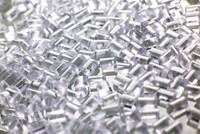Advertisement
Grab your lab coat. Let's get started
Welcome!
Welcome!
Create an account below to get 6 C&EN articles per month, receive newsletters and more - all free.
It seems this is your first time logging in online. Please enter the following information to continue.
As an ACS member you automatically get access to this site. All we need is few more details to create your reading experience.
Not you? Sign in with a different account.
Not you? Sign in with a different account.
ERROR 1
ERROR 1
ERROR 2
ERROR 2
ERROR 2
ERROR 2
ERROR 2
Password and Confirm password must match.
If you have an ACS member number, please enter it here so we can link this account to your membership. (optional)
ERROR 2
ACS values your privacy. By submitting your information, you are gaining access to C&EN and subscribing to our weekly newsletter. We use the information you provide to make your reading experience better, and we will never sell your data to third party members.
Business
Pushing for Performance
Honeywell's Dicciani is reshuffling its specialty materials business so that it lives up to its name
by MARC S. REISCH, C&EN NORTHEAST NEWS BUREAU
March 22, 2004
| A version of this story appeared in
Volume 82, Issue 12
Honeywell International's specialty materials business is undergoing a transformation that Nance K. Dicciani, 56, its president and chief executive officer, expects will make it a true performer.
Like many other chemical businesses, the Honeywell unit hasn't been a stellar player in recent years. Sales of $3.2 billion in 2003 were off 21% from five years before, and profits were down 69% from 1998 to $136 million. But Dicciani--who left a secure job as senior vice president at Rohm and Haas more than two years ago to join Honeywell--says she is close to turning the business around.
"We are moving our portfolio toward consistent and more stable financial performance with a steady growth rate and increased profitability," Dicciani says. In past years, she says, it has been a case of "tell me what part of the growth cycle this is, and I'll tell you how much money I'm making."
She is pushing her specialty materials group--which is saddled with a number of commodity businesses--to live up to its name. And that means focusing on a group of high-growth and high-profit "platforms," including packaging polymers, electronic materials, and advanced fibers. These platforms, which together have annual sales of about $1.7 billion, are what she considers her "core" portfolio. Commodities have got to go.
The core businesses that are now Dicciani's focus are, she says, "technology protected, global, and growing. And they are all future oriented, focusing on comfort trends, and technological trends in the electronics area, and so forth.
"We've exited a whole slew of businesses," Dicciani says, to focus on the more important growth businesses. In the past 18 months, Honeywell Specialty Materials has either sold or shut down eight commodity businesses, ridding itself of 23 plants. "All of them were not only drains on our financial performance, but they were also drains on management's time and attention."
The firm's polyester business--which cranks out the thick yarns for tire cord and seat belts--could be history for Honeywell by the end of June, Dicciani says. The unit has annual revenues of about $370 million and plants in North Carolina, France, and China. "We're talking to potential buyers right now," she says.
The firm's nylon fiber assets are likely to go too, eventually. "It's not a core business for us," she says. "However, we will continue to run it as optimally as we can, and it will be profitable for us until a better strategic option presents itself."
Dicciani--who heads the smallest of four business groups at Honeywell, a $23.1 billion aerospace, automotive parts, and controls maker--says she is in no rush to put the nylon fiber business up for sale. Indeed, she strengthened it last year by swapping Honeywell's nylon engineering plastics for BASF's nylon fibers. Despite Honeywell's long-range intentions for the nylon fiber business, Dicciani says the deal made sense. "The synergies we gained made us a low-cost producer," she explains. "It's self-supporting, and when the time comes, we will decide what to do with it."
The business, which makes nylon fibers for carpet under the Anso name and now also under BASF's former Zeftron designation, was not earning a profit before the swap. The deal with BASF added polymerization and fiber plants in South Carolina and Canada, and a carpet fibers plant in Shanghai. Annual sales are now more than $1 billion.
THE STRATEGIC SENSE behind the swap notwithstanding, many old-line chemicals such as nylon and polyester have been cyclical because of their dependence on the petroleum and natural gas cycles, Dicciani notes. "And these are the kinds of products that are typically targeted by developing countries."
While at one time the high cost of investment to make nylon and polyester would have discouraged others from entering the business, governments and international bankers have helped make cash available for such ventures in emerging economies. Because "these are the types of molecules you can make over and over again," competition has increased, Dicciani says.
And it's not simply a matter of riding the business cycles any longer, she says. Two years ago, in a speech to the Synthetic Organic Chemical Manufacturers Association stakeholders' meeting, Dicciani alluded to the then "perfect storm"--a combination of price declines in key markets coupled with high energy and raw material prices--troubling chemical makers. Now, she says, "the winds are dying down. The seas have abated. There are signs that things are improving." But stormy conditions over the past few years have led to fundamental changes for chemical makers.
"We should be exporting much more from this country than we are because of exchange rates," Dicciani points out. But the high cost of energy and raw materials makes that problematic for U.S. chemical makers.
"The days of natural gas for $2.00 or $2.25 per million Btu are not going to return anytime soon, if ever. That will cause a structural change in the industry and change the way we view technology and raw material positioning," she says. What's more, global competition is here to stay, and "that's a sea change that won't abate."
Instead of commodity-oriented petrochemicals prone to wide market price swings, Dicciani says she is setting up the specialty materials business to focus on future-oriented technology. "We don't want to be involved in the kind of business open to allowing anyone to build a plant anywhere in the world and turn out millions and millions of pounds of a product."
In the past 18 months, specialty materials has made a significant small acquisition. It is a strategically important biaxally oriented nylon film facility purchased from the Korean company Kolon. In Asia, many foods that would be sold in cans in the U.S. are vacuum-packed in films, she says. Round cans can't be stored compactly and the weight of the cans is significant, she points out.
Vacuum-packaging of foods in nylon films is the wave of the future, she says. Vacuum-packaged foods are flat and light. In addition, the films are tough, puncture resistant, and survive just like rigid packaging, such as the jars and bottles that are the workhorse containers for U.S. consumers. "We intend to expand this business not only in Asia but also in the U.S."
The biaxally oriented nylon films are part of a "barrier solutions" growth platform that Honeywell intends to enlarge. The segment also includes fluoropolymer films used to package pharmaceuticals. "In days gone by, when you bought pills in push-through packages, you could expect a shelf life of less than a year. With the new fluoropolymer films, the shelf life is a lot longer," Dicciani says. Annual sales of films to packaged foods, pharmaceuticals, and electronics makers are about $100 million and growing between 5 and 20% annually depending on end use, she says. Profit margins run between 10 and 15%.
Another important growth platform for Dicciani's unit is fluorines, a segment with sales of about $800 million. Profit margins here are about 15%, and growth is about 5% a year. At its plant in Geismar, La., the company is the biggest hydrofluoric acid maker in the world, outproducing competitors DuPont, Solvay, Ineos, and Atofina. About two years ago, the company started up a $90 million plant to supply the polyurethane foam blowing agent hydrofluorocarbon-245fa. More recently, it completed a $100 million HFC-125 refrigerant unit.
Global use of chlorinated fluorocarbons that deplete upper atmospheric ozone is on the decline because of environmental regulations, Dicciani notes. Honeywell expects to benefit by supplying safer hydrofluorocarbon substitutes.
Fluorine-based products are also playing a role in Dicciani's $300 million-a-year electronic materials platform. "As circuitry line widths on chips get smaller, the use of materials like fluorinated compounds is going to increase," she says. More than 280 patents protect Honeywell's dielectrics, etchants, sputtering metals, and high-purity chemical sales into this area, which includes tough competitors such as Clariant, Rohm and Haas, and Air Products & Chemicals. Dicciani says her firm's piece of the action is growing at 11% annually.
Advanced fiber and composites is also a growth platform, with about $100 million in annual revenues. Sales of composites using Spectra fiber--a high-density polyethylene used to make bullet-resistant vests, helmets, and airplane cockpit doors--are growing at more than 15% annually for military and security applications, Dicciani says. Though the fiber and composites unit is smaller than the competing aramid fibers businesses of DuPont or Japan's Teijin, profit margins can approach 20%, she says.
TO SUPPORT all this growth, Dicciani says, Honeywell Specialty Materials' investment in R&D is just above the average for other chemical makers, which is a tad higher than 3% of sales. Of course, the high-growth businesses garner a higher share of R&D funds than do commodities.
The firm's interests include the application of nanotechnology to new and existing opportunities, Dicianni says. Earlier this month, Honeywell transferred materials scientist Chien-Wei Li to the position of director of nanotechnology development for specialty materials. He'll spearhead commercial development not only of novel materials for use in semiconductors, but also of materials useful to Honeywell corporate groups, such as sensors and engine systems.
And Asia, where Honeywell makes 45% of its electronic materials sales, will be getting a new applications development lab. The firm expects to have the lab, in Shanghai, up and running this June, serving customers of all specialty materials businesses. "We expect to have about 100 people there in the next six to eight months," Dicciani says. Ultimately, scientists there might undertake research into new products. "It's not our first order of business, but I won't rule it out."
Going forward, Dicciani says, "we're getting out of gas- and petroleum-based products, and raw materials will be much less of an issue for us because of our portfolio changes. We want to play in tomorrow's technology as opposed to yesterday's chemistry. We want to be in the middle of the fray."







Join the conversation
Contact the reporter
Submit a Letter to the Editor for publication
Engage with us on Twitter